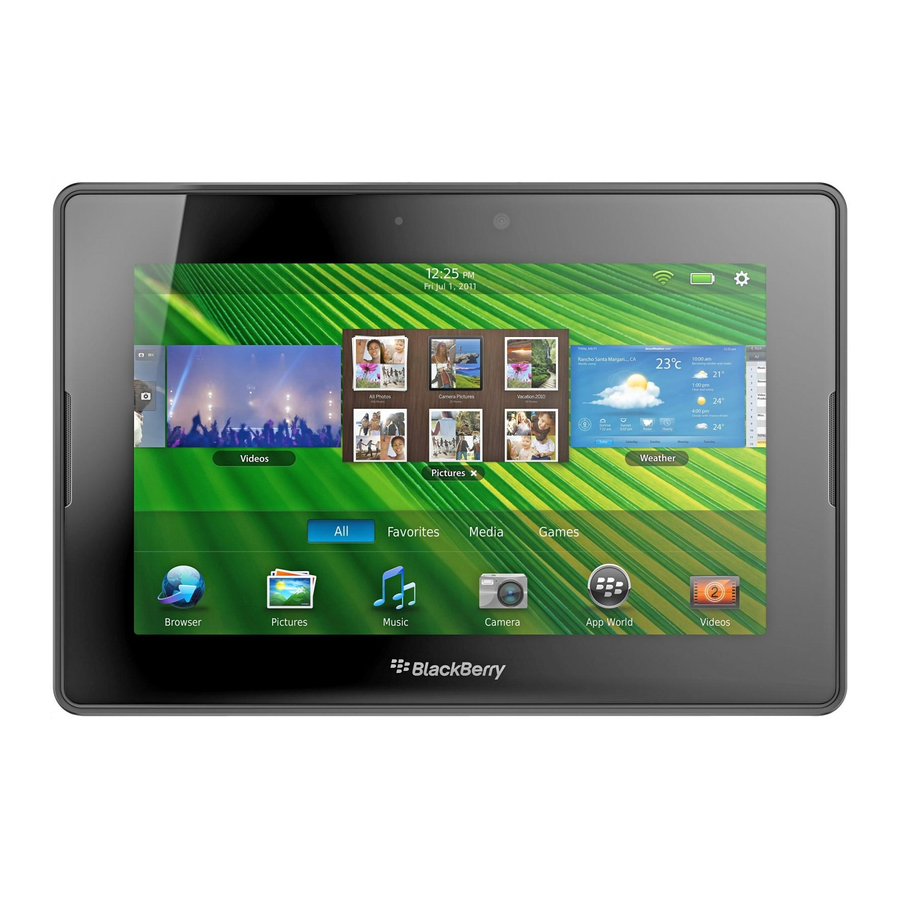UI Guidelines
Make your application touch-centric
A touch-centric experience on the BlackBerry PlayBook tablet means that users interact with content by using gestural
interactions, such as swiping, instead of "poking" UI components. Avoid cluttering the screen with UI components and
design your application to take advantage of the gestural interactions. For example, allow users to zoom in to a picture by
using the pinch out gesture instead of tapping a button to incrementally zoom in.
Bezel gestures
The BlackBerry PlayBook tablet supports gestures from the device bezel (the frame around the display area of the screen).
The "swipe from the bottom of the screen" gesture is a core interaction, which displays the application list. If the
application list is displayed already, this gesture displays the open but minimized applications. There are other bezel
gestures that are available for you to use as shortcuts to features in your applications. These gestures include the following:
Gesture
Swipe from the top of the screen
Swipe from the left or right side of the screen
Swipe from the top corners of the screen
Swipe from the bottom left corner of the screen
Interactions with content on the screen
If they apply to your application, you can implement the following interactions to allow users to directly manipulate content
on the screen.
Gesture
Tap
Double tap
Drag or swipe
12
Expected result
Displays a menu for settings or options
Switches applications
Displays application notifications and status indicators
Displays the keyboard
Expected result
This gesture initiates an action. For example, when users tap an
application icon, the corresponding application opens.
This gesture focuses on the targeted area of the screen (for example, by
zooming in or out).
This gesture moves the content on the screen in the direction of the
drag or swipe and at the corresponding rate of speed. For example,
users can move slowly through a list by dragging a finger on the screen,
or they can move quickly through a list by swiping across the screen.
Design principles

